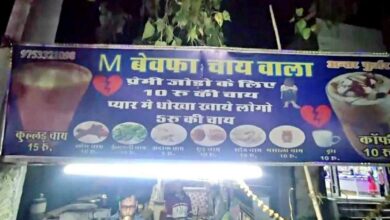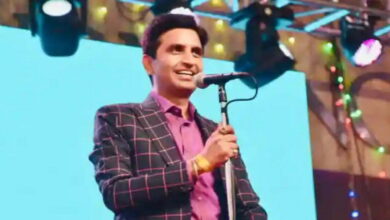the other direction in the second term

Although the third anniversary of the second term of Prime Minister Narendra Modi is on 30 May, but exactly eight years ago today i.e. on 26 May 2014, he took oath as the Prime Minister for the first time. In this sense, his eight years as Prime Minister have been completed. So, this is your chance to compare the performance of five years of his first term and three years of his second term. Usually, when voters give a chance to a ruling party for the second time in a row, it is expected that the direction set by the government in the first term will move forward at a much faster pace. It is also expected that the plans made by the government in the first term or the agenda set for the country and society will be reached to the final culmination or there will be a more intense effort to reach it.
Expectations were high in the second term of Narendra Modi’s government and this was because he had repeatedly said in his first term that he had to fill the pits of 70 years. He had promised to change the status quo that has prevailed since independence in every sphere. People trusted his promise. But after the completion of three years of the second term, can it be said that the direction the country got in the first term, the plans made and the agenda set have been carried forward? In fact, in the first term, Prime Minister Narendra Modi had announced many big economic schemes and made a big change in economic policies. Their assessment on the basis of merits and demerits has its place, but the Modi government was taking concrete and courageous steps to initiate economic transformation. Similarly, the Prime Minister had announced several schemes that completely changed politics. In the second term, no major reform initiative has been taken nor has there been any effort to carry forward the already announced schemes.
The main agenda of the first Modi government was economic reforms and making the country economically viable. For this, the Make in India scheme was announced and at the same time for the first time people had heard about Ease of Doing Business. These two were related to each other. To make business easier in India, the government was making policy changes so that domestic and foreign companies start manufacturing in India and products made in India reach the world. The Make in India campaign had two stated goals. First, to create 100 million jobs in India and secondly, to increase the share of manufacturing sector in India’s GDP from 16 to 25 percent. Now nobody talks about this goal. In the three years of the second term, there was no discussion of it anywhere. It can be said that out of these three years, the first two years went out in the corona epidemic. But Corona alone is not responsible for the condition India’s manufacturing sector is in today.
Today the share of manufacturing sector in India’s GDP has come down from 16 per cent to 13 per cent. Where it had to increase by nine per cent, on the contrary it decreased by three per cent. At the time when the Make in India campaign was announced, there were five crore jobs in the manufacturing sector, which has now come down to less than three crores. That is, instead of being five to ten, it became five to three crores. There are many reasons for the failure of this plan. Those reasons require separate consideration but there is no doubt that the Modi government took the initiative with good intentions. Demonetisation was also an audacious initiative for economic reforms. With the intention of eradicating black money from the country, five hundred and one thousand rupees notes were removed from circulation without any thought. After this, GST was implemented in a hurry under the scheme of One Nation, One Tax.
Narendra Modi had announced all these schemes within three years of becoming the Prime Minister for the first time. Make in India, Ease of Doing Business, Start up India, Digital India, Swachh Bharat Mission, Demonetisation, GST etc. all the schemes were announced one after the other. It seemed that the work which was actually being done in piecemeal or slow pace in the last 70 years is being accelerated. But none of these plans came to fruition either due to policy deficiencies or due to irregularities in the implementation of policies. The government is responsible for this. But there is no hesitation in saying that in the first term there were bold and big initiatives for economic transformation. In contrast, economic reforms were put on hold in the second term. The government did pass a law to reform agriculture and labor policies, but due to farmers’ protests, agricultural laws had to be withdrawn and labor laws were not implemented. On the contrary, the direction of the government changed in the second term. The entire focus of the second term was on the agenda of the Rashtriya Swayamsevak Sangh as decided during the days of the Bharatiya Jana Sangh.
The second term began with the abrogation of Article 370 that gave special status to Jammu and Kashmir and the bifurcation of the state. The Modi government, formed for the second time on 30 May, abolished Article 370 in the monsoon session i.e. in August 2019. After this, the government amended the citizenship law and made a provision to give citizenship to all non-Muslims who came to India after being persecuted from neighboring countries. The Central Government made triple talaq which was declared illegal by the Supreme Court, making it a law and declared a crime. After the decision of the Supreme Court, Prime Minister Modi laid the foundation stone for the construction of a grand Ram temple in Ayodhya. The Prime Minister dedicated the Kashi Corridor to the nation. With this, both the politics of the BJP and the policy path of the government have turned in the opposite direction. Now the whole focus is on hijab and halal meat or on renaming cities and towns and correcting historical mistakes and getting back the shrines which were allegedly destroyed by Muslim rulers. Now the entire political discourse has become bulldozer-centric.
The question is that when in the first term, the Modi government announced such a big agenda of economic development and socio-political change and people gave it a second term in the hope of their completion, then why did the government not stick to the same agenda? Is it because these schemes failed or appeared to fail due to lack of implementation or lack of resources and will power, so the risk was not taken to pursue them or stick to them? This may also be the reason why the initial failure of these schemes has put the government in danger of electoral loss and it has turned to schemes that ensure electoral success.






